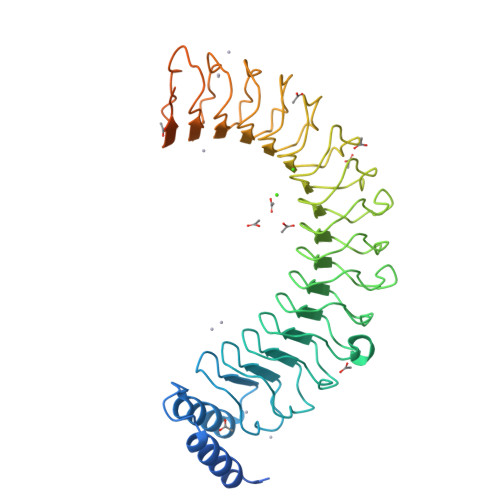Unusual molecular architecture of the Yersinia pestis cytotoxin YopM: a leucine-rich repeat protein with the shortest repeating unit.
Evdokimov, A.G., Anderson, D.E., Routzahn, K.M., Waugh, D.S.(2001) J Mol Biology 312: 807-821
- PubMed: 11575934
- DOI: https://doi.org/10.1006/jmbi.2001.4973
- Primary Citation of Related Structures:
1G9U, 1JL5 - PubMed Abstract:
Many Gram-negative bacterial pathogens employ a contact-dependent (type III) secretion system to deliver effector proteins into the cytosol of animal or plant cells. Collectively, these effectors enable the bacteria to evade the immune response of the infected organism by modulating host-cell functions. YopM, a member of the leucine-rich repeat protein superfamily, is an effector produced by the bubonic plague bacterium, Yersinia pestis, that is essential for virulence. Here, we report crystal structures of YopM at 2.4 and 2.1 A resolution. Among all leucine-rich repeat family members whose atomic coordinates have been reported, the repeating unit of YopM has the least canonical secondary structure. In both crystals, four YopM monomers form a hollow cylinder with an inner diameter of 35 A. The domain that targets YopM for translocation into eukaryotic cells adopts a well-ordered, alpha-helical conformation that packs tightly against the proximal leucine-rich repeat module. A similar alpha-helical domain can be identified in virulence-associated leucine-rich repeat proteins produced by Salmonella typhimurium and Shigella flexneri, and in the conceptual translation products of several open reading frames in Y. pestis.
Organizational Affiliation:
Protein Engineering Section Macromolecular Crystallography Laboratory, National Cancer Institute at Frederick, Frederick, MD 21702-1201, USA. eudokima@ncifcrf.gov





















